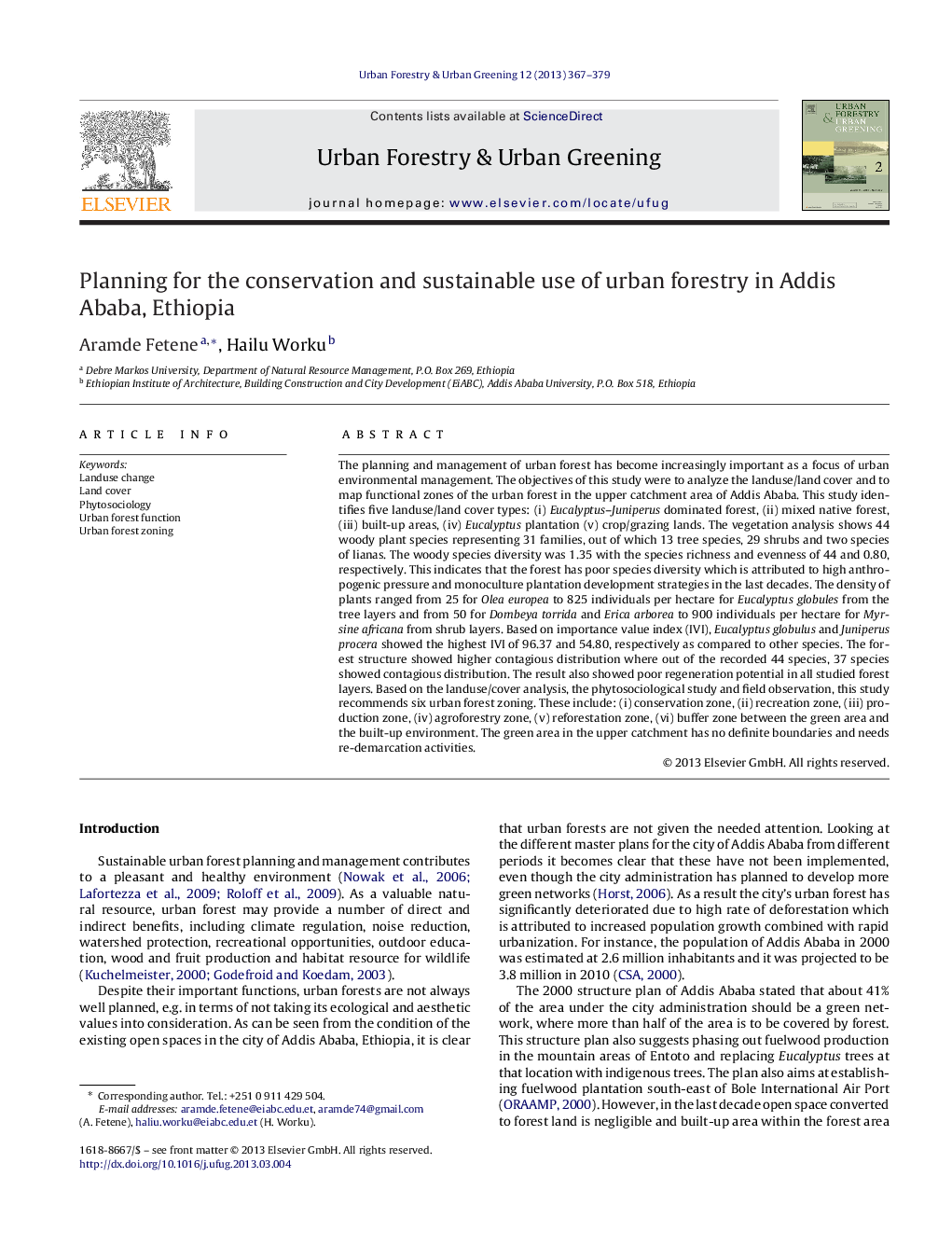| کد مقاله | کد نشریه | سال انتشار | مقاله انگلیسی | نسخه تمام متن |
|---|---|---|---|---|
| 94049 | 160252 | 2013 | 13 صفحه PDF | دانلود رایگان |

The planning and management of urban forest has become increasingly important as a focus of urban environmental management. The objectives of this study were to analyze the landuse/land cover and to map functional zones of the urban forest in the upper catchment area of Addis Ababa. This study identifies five landuse/land cover types: (i) Eucalyptus–Juniperus dominated forest, (ii) mixed native forest, (iii) built-up areas, (iv) Eucalyptus plantation (v) crop/grazing lands. The vegetation analysis shows 44 woody plant species representing 31 families, out of which 13 tree species, 29 shrubs and two species of lianas. The woody species diversity was 1.35 with the species richness and evenness of 44 and 0.80, respectively. This indicates that the forest has poor species diversity which is attributed to high anthropogenic pressure and monoculture plantation development strategies in the last decades. The density of plants ranged from 25 for Olea europea to 825 individuals per hectare for Eucalyptus globules from the tree layers and from 50 for Dombeya torrida and Erica arborea to 900 individuals per hectare for Myrsine africana from shrub layers. Based on importance value index (IVI), Eucalyptus globulus and Juniperus procera showed the highest IVI of 96.37 and 54.80, respectively as compared to other species. The forest structure showed higher contagious distribution where out of the recorded 44 species, 37 species showed contagious distribution. The result also showed poor regeneration potential in all studied forest layers. Based on the landuse/cover analysis, the phytosociological study and field observation, this study recommends six urban forest zoning. These include: (i) conservation zone, (ii) recreation zone, (iii) production zone, (iv) agroforestry zone, (v) reforestation zone, (vi) buffer zone between the green area and the built-up environment. The green area in the upper catchment has no definite boundaries and needs re-demarcation activities.
Journal: Urban Forestry & Urban Greening - Volume 12, Issue 3, 2013, Pages 367–379